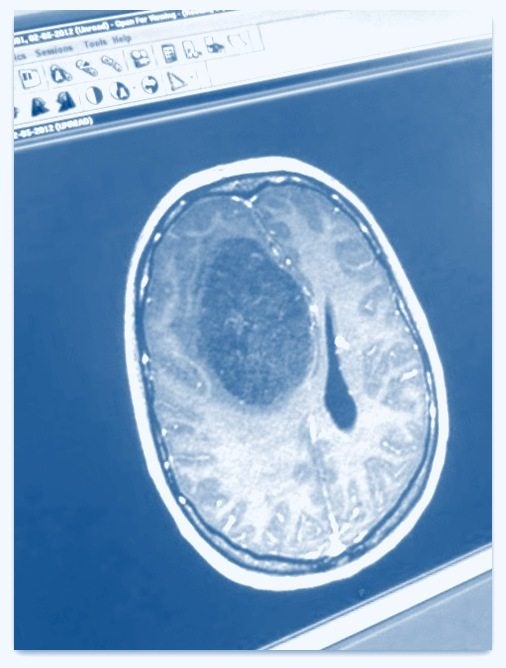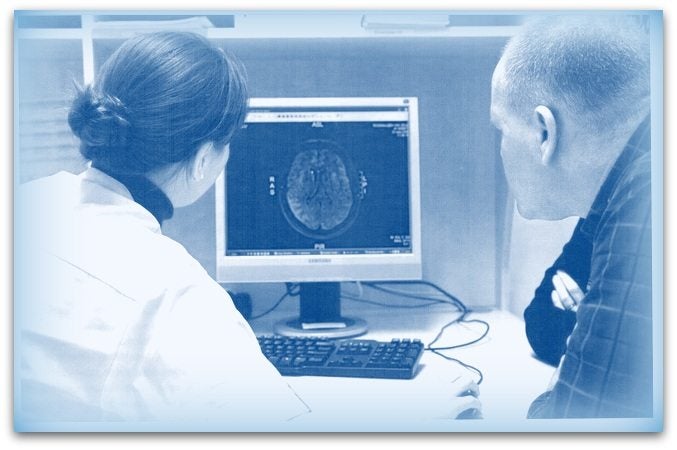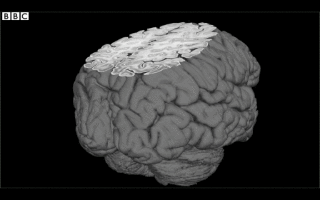Brain tumor, cancer
Note! The information on the subject brain tumor is designed to complement a conversation with your doctor. This general information cannot consistently uphold to any individual situation. It is rather meant to get familiar with terminology on this subject. See our disclaimer at the bottom of the site.

A tumor, also known as a neoplasm, is an abnormal mass of tissue when cells proliferate. A tumor is an abnormal growth of cells. This can be benign or malignant (or cancerous).
A tumor is malignant if it has the tendency to spread to other parts of the body. But the distinction in the brain between benign or malignant is less important: a benign tumor takes up space in the skull as well, causing the brain tissue to get in oppression.
This process is called increased intracranial pressure. Commonly abbreviated IH, IICP or raised ICP.
In general, symptoms and signs that suggest a rise in ICP including headache, vomiting without nausea, ocular palsies, altered level of consciousness, backache and vision disturbances.
 brain tumor on scan
brain tumor on scan
PRIMARY OR SECONDARY BRAIN TUMORS
Tumors are generally separated into two categories:
1) A primary brain tumor is a tumor that started within the brain tissue, for example a tumor in the meninges , cells of the braintissue, or in the pituitary gland.
Here is a more extensive page on primary brain tumor.
2) A secondary brain tumor is a metastasis (metastatic) cancer that has spread from different areas of the body, for example: a breast, the lungs or a melanoma (skin cancer). They are known as brain metastasis tumors. Metastatic brain tumors are more common than primary brain tumors, with about half of the metastases originate from lung cancer.
The difficulty arises by the fact that both the tumor and the treatment may lead to brain damage. Radiotherapy / irradiation, surgical removal of the tumor, as well as drug therapy do have an effect in the complex network in the brains.

SYMPTOMS
A brain tumor can give very different symptoms. These are dependent on the location and the size of the tumor.
Possible symptoms are:
- headache
- sometimes neckpain
- nausea and vomiting
- vomiting without nausea
- paralysis
- epileptic seizures
- drowsiness
- visual difficulty (visual loss and blurring)
- hearing difficulty
- not feeling right cognitively
- deficits (not able to talk, an uncertain walk, partial paralysis or weakness depending on the location of the tumor in the head; With growth in the brain part that controls movement: paralysis or weakness in the other half of the body)
- sometimes in slow-growing tumors behavioral changes can be seen
IMPLICATIONS
Depending on the location of the tumor, the effects may include the following:
- unrestrained emotions
- aphasia (difficulty speaking or not able to speak)
- apraxia (inability to perform complex actions in sequence)
- neglect
- hemianopia (seeing only the half)
Tumor in the left hemisphere:
(smaller) paralysis
problems with the language, such as not pronouncing words correctly or do not understand what others say. There may be memory disorders.
Tumor in the front of the brains:
behavioral changes may occur, such as inertia and indifference or even irritability and moodiness. Impulsivity but also lack of initiative.
Tumor the back of the brains:
sometimes causes problems with reading and seeing.
Tumor in the pituitary gland:
can give eatingdisorders.
Tumor in the brainstem:
may cause drowsiness and fatigue.
TYPES OF TUMORS:
gliomas
meningiomas
pituitary tumor
metastasis
tumors in the spinal cord
vestibular schwannoma, often called an acoustic neuroma
medulloblastomas
TREATMENT OF A TUMOR
A neurologist, acts on the basis of the symptoms the diagnosis.
An additional CT or MRI scan can show the tumor in the brains.
The treatment depends on the type of tumor and the stage in which it is located.
The tumor is situated between healthy tissue which makes it sometimes difficult to remove surgically.
A radiation treatment or chemotherapy (drugs) can then prevent a cancer comes back again.
The future expectation of someone with a brain tumor varies from situation to situation, from human to human.
WHAT IS A MRI?
Magnetic resonance imaging (MRI), nuclear magnetic resonance imaging (NMRI), or magnetic resonance tomography (MRT) is a medical imaging technique used in radiology with a very strong magnet which can create images with sound waves of someone's head (in this case).


MRI is the investigative tool of choice for neurological cancers as it is more sensitive than CT for small tumors. The contrast provided between grey and white matter makes it the optimal choice for many conditions of the central nervous system.
Because it is a very strong magnet patients are required to remove all (ferromagnetic) metallic objects, often by changing into a gown or scrubs. Also ferromagnetic metal in the body like cochlear implants and most permanent pacemakers are for safety reasons, not allowed. The appliance makes a lot of noise.
They give a bell in your hand and there is a microphone in case you want to talk to the employee.
You can bring your own music to listen to.

Sources: American Brain Tumor Association, www.abta.org ,American Cancer Society, Inc, Hersentumor.nl ziekenhuis.nl Dutch Society for Neurosurgery Centre of the Dutch Cancer Society Epilepsy Association of Neurologists, Comprehensive Cancer Centers, www.hersentumor.nl / parents-and-children, www.pseudotumorcerebri.nl cerebral, Jenny Palm, http://www.hopkinsmedicine.org/neurology_neurosurgery http://umm.edu/programs/hearing/services/acoustic-neuroma Clinton J. Baird, MD Medical Director of Neurosurgical Services and Neurosurgeon